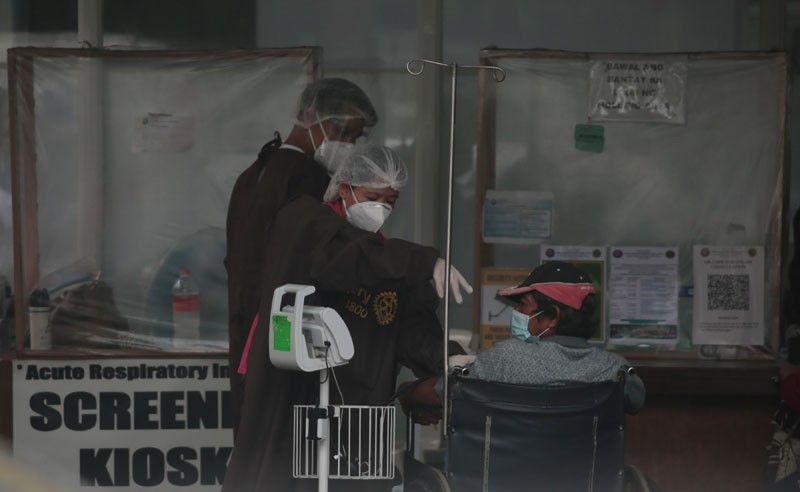330K COVID-19 cases seen by month’s end

MANILA, Philippines — A research team from the University of the Philippines said the number of COVID-19 cases in the country may rise to 330,000 to 375,000 by the end of September, although the country is headed in the right direction in its response to the coronavirus pandemic.
In its latest case projection, the OCTA Research Team said more than 100,000 more coronavirus cases may be logged until the end of the month, despite all indicators showing improving status in recent weeks.
In an interview with The Chiefs on One News/TV 5 on Tuesday, mathematics professor and OCTA Research Team member Guido David noted the decreasing trend in the number of new cases in Metro Manila in the past weeks.
He also cited the low reproduction rate of new cases, improving hospital utilization rate and the decreasing positivity rate or the percentage of people who test positive for the viral illness.
“All of the indicators show that we are headed in the right direction,” he said, however adding that the public still has to be cautious.
David clarified their recent statements that the country has already flattened the curve, stressing the definition refers to decreasing number of new cases.
“The curve of the total number of cases is not yet flattened. If that’s the case… then we’re far from it. That’s not the kind of flattening that we are talking about,” he said in a mix of English and Filipino.
“To remove the ambiguity, what we are saying is that we are on a decline,” he added.
David said the reimposition of the modified enhanced community quarantine in Metro Manila and nearby provinces last month helped in improving the situation.
He also noted that the decreasing trend was sustained even after the quarantine status was reverted back to general community quarantine.
He said this can be attributed to both the change in behavior, as well as the policies implemented such as improved contact tracing and better isolation protocols.
“Whatever’s working, we want to continue doing this,” he said. “We want to continue this trend until the number of new cases is down to double digits.”
David earlier said that they will not yet recommend the shift to modified general community quarantine despite the decreasing number of cases, citing the need to evaluate the situation before further relaxing the quarantine status in Metro Manila.
David earlier explained that the “flattening of the curve” that they have observed in the country does not mean there will be no new cases.
He said the projection is based on the current trajectory and that actual number of cases may even be lower if the country succeeds in further limiting the transmission of the virus.
At the Department of Health, Undersecretary Maria Rosario Vergeire said the government is considering various factors in choosing vaccines against COVID-19, such as safety, efficacy, effectiveness and price.
“Right now, the government is in the phase where we are trying to map out and scope all manufacturers or developers that are approaching us and those in other countries. Of course, we want the best for our population and that’s why we are trying to negotiate with all these manufacturers,” she told reporters yesterday.
Vergeire added the DOH is in talks even with those still in pre-clinical trial phase to get the most “appropriate vaccine that can be used in the Philippines,” and gave assurance the Department of Science and Technology has created a “vaccine expert panel.”
The second criteria being considered is that a vaccine should be registered with the Food and Drug Administration. The vaccine must also be listed in the National Drug Formulary, otherwise it cannot be procured by the government.
Meanwhile, National Task Force against COVID-19 response chief implementer Carlito Galvez Jr. said on Tuesday that testing capacity of the government is now 30,000 to 31,000 per day.
At a press briefing, Galvez said testing is being done by 117 laboratories nationwide.
“We have reached our target and it’s moving forward and we have many laboratories applying and they are on level 3, level 4 in their application,” Galvez said.
“We have more than 25 GenXpert laboratories. It is difficult to get supply of GenXpert. We are getting only 5,500 a week and we are now negotiating with the US if it is possible to increase supply,” Galvez said.
He said the government is also capable of detecting unseen carriers. “We can also have early treatment that will reduce severe and critical cases,” he said. – Jose Rodel Clapano
- Latest
- Trending































